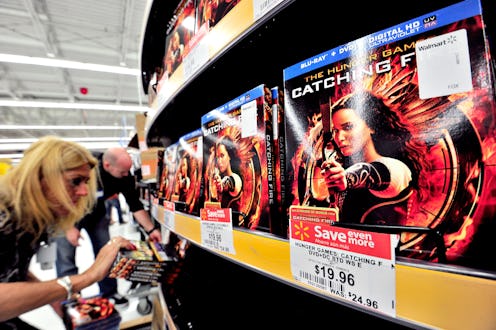Entertainment
Report Confirms Women Are Underrepresented in Film
It seems like women have made a lot of progress in film: Divergent and The Hunger Games have been huge hits at the box office, women have been writing great films like Frances Ha, Ruby Sparks and Celeste and Jesse Forever, and women directors like Lena Dunham and Kathryn Bigelow have been receiving awards and positive press. But although women have come a long way as far as representation goes, there's still a lot more progress to be made. That's never been for evident than looking at the annual reports from the Center for the Study of Women in Television and Film. The numbers are shocking, but not surprising, and they say a lot about the current state of women in Hollywood. Here are some of the biggest takeaways:
Few Women Are Behind the Scenes, and It's Not Improving
Women are a minority in almost every role behind the scenes and have been for quite some time. In a study of key behind-the-scenes roles in the top 250 films, women have actually regressed — they made up just 16 percent of these roles in 2013, while in 1998, they held 17 percent of these jobs. In 2013, women made up six percent of directors, ten percent of writers, 15 percent of executive producers, 25 percent of producers, 17 percent of editors and three percent of cinematographers.
Independent Film is Better, But Not Much
In a study of the "festival films" of 2013, women fared better in terms of employment, yet were still consistently in the minority. Women were 23 percent of directors, 22 percent of writers, 27 percent of executive producers, 33 percent of producers, 20 percent of editors, and ten percent of cinematographers. And again, most of these percentages have decreased in comparison to last year or even six years ago.
Women Are Still Underrepresented Onscreen
But women aren't just underrepresented behind the scenes — they're underrepresented on the silver screen, too. In a study of the top 100 films of 2013, women made up 15 percent of film protagonists. Even in less important roles, women were still underrepresented — only 30 percent of all speaking roles went to women. And of course, the likelihood of appearing in a movie decreases if you're a woman of color: 73 percent of women in movies were white, 14 percent were African American, five percent were Latina, and three percent were Asian. For comparison, three percent of these women were "other-worldly," meaning that people were just as likely to see an Asian woman onscreen as they were an alien (if that alone doesn't speak volumes, I don't know what does). Even when women have a speaking role, it's still in a limited capacity. Women in movies are typically younger than their male counterparts, more likely to have an identifiable marital status, less likely to have an identifiable job status, less likely to be leaders, and less likely to have an identifiable goal.
